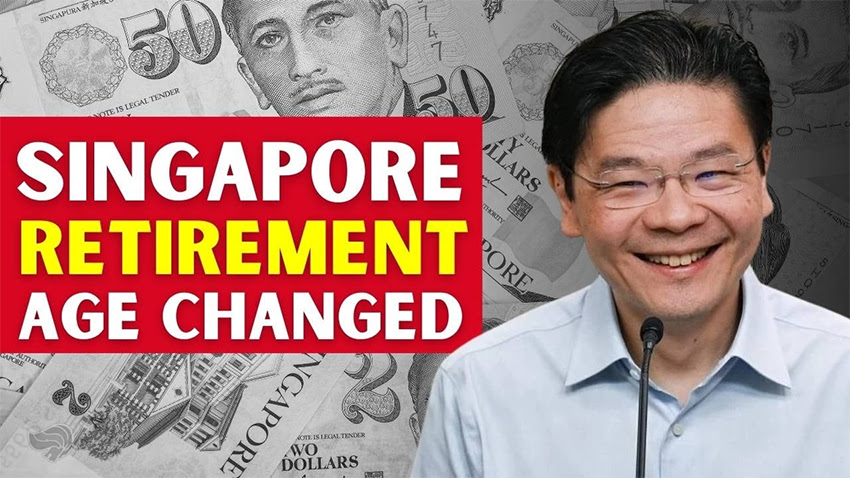Singapore Retirement Changes- In 2025, Singapore will implement significant retirement reforms, including raising the retirement age to 64 and re-employment age to 70. Enhanced CPF contributions for older workers will boost retirement savings. Optimized CPF LIFE schemes will offer flexible monthly payouts, while new initiatives will support older workers with training and job matching. These changes ensure a sustainable, inclusive retirement system.
Singapore Retirement Changes 2025
In 2025, Singapore will implement significant changes to its retirement and pension systems, aiming to address the financial security of citizens in their later years. These reforms are designed to ensure sustainability, flexibility, and enhanced support for retirees, ultimately empowering seniors to live financially independent and fulfilling lives.
Read More:-
Increased Retirement Age
A key reform is the increase in the official retirement age from 63 to 64, and the re-employment age from 68 to 70. This change, effective from 2025, allows older workers to remain in the workforce for longer, providing them with the opportunity to continue earning and saving. This adjustment reflects the government’s commitment to enabling seniors to stay financially independent for a longer period.
Enhanced CPF Contributions
The Central Provident Fund (CPF), Singapore’s cornerstone retirement savings scheme, will also undergo improvements. For workers aged 55 and above, both employers and employees will contribute higher amounts to CPF accounts. This increase is designed to close the gap in retirement savings and ensure that seniors can accumulate a larger financial cushion as they approach retirement age. These enhanced contributions are aimed at strengthening the long-term financial security of older workers.
Also Check:-
Honda Activa 125 vs TVS Jupiter 125
Lifetime Monthly Payouts
Another notable change is the optimization of the CPF LIFE scheme, which offers lifelong monthly payouts to retirees. The newly enhanced scheme will provide greater flexibility, allowing retirees to choose payout options tailored to their individual needs. This means that Singaporeans can enjoy more personalized, reliable income during their retirement years, ensuring long-term financial stability.
Support for Silver Workforce
In addition to the retirement age and CPF changes, the government will introduce a range of initiatives to support the silver workforce. These include training programs, job-matching services, and incentives for employers to hire and retain older workers. The goal is to foster an inclusive workforce where seniors can continue to contribute meaningfully to society and stay engaged in their professional lives.
A Future-Ready Retirement System
The retirement reforms of 2025 reflect Singapore’s proactive approach to demographic changes, ensuring that the nation’s retirement system remains sustainable and inclusive. By raising retirement ages, enhancing CPF contributions, and supporting older workers, Singapore is building a robust, age-friendly society that prioritizes the well-being and security of its citizens.
Read This:-
Final Words
The 2025 retirement changes are transformative steps toward empowering Singapore’s seniors and securing their financial futures. These reforms not only ensure that older citizens have the means to live comfortably in retirement but also promote a future-ready, inclusive workforce. With these initiatives, Singapore is well on its way to becoming a leader in creating a resilient and age-friendly society.
Singapore Retirement Changes FAQ’S
What is The New Retirement Age in Singapore?
The retirement age will increase from 63 to 64 starting in 2025.
What Changes are Being Made to CPF Contributions?
CPF contributions will be higher for workers aged 55 and above to boost retirement savings.
How will CPF LIFE Schemes be Improved?
CPF LIFE schemes will offer greater flexibility and better returns for retirees.
What Support Will Older Workers Receive?
Older workers will get training programs, job matching services, and employer incentives.

